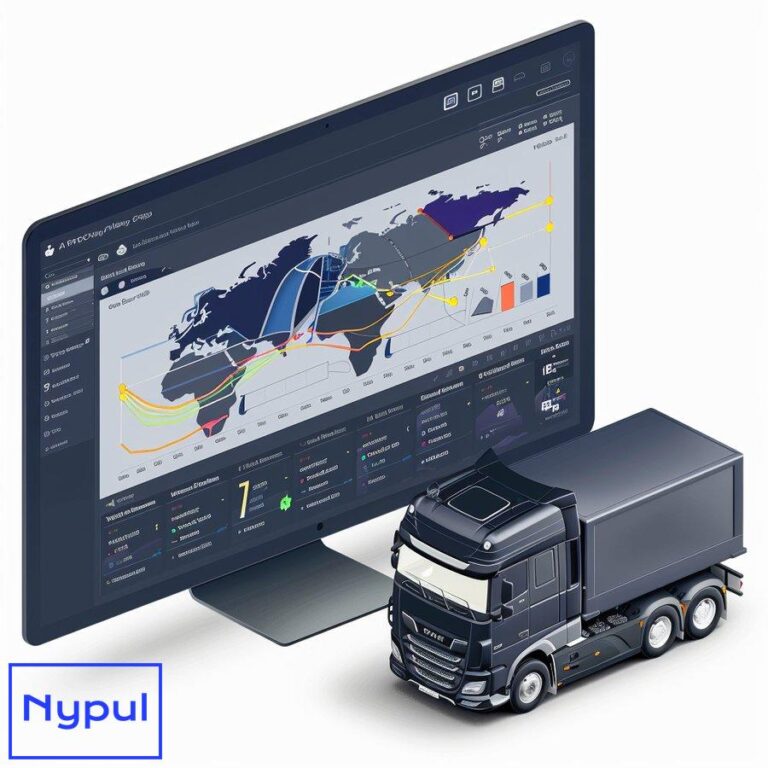What Apps Do Truck Drivers Use
What are the main types of apps used by truck drivers?
Truck drivers rely on various mobile applications to streamline their work and enhance productivity on the road. The main categories of apps utilized by truckers include:
Navigation and route planning apps
These apps provide turn-by-turn directions optimized for commercial vehicles. They factor in truck-specific attributes like height, weight, and hazardous materials restrictions to plot safe and efficient routes. Popular examples include Trucker Path, CoPilot Truck GPS, and Google Maps with truck mode.
Electronic logging device (ELD) apps
ELD apps help drivers track their hours of service and maintain compliance with federal regulations. They automatically record driving time and duty status. KeepTruckin, BigRoad, and Samsara offer widely-used ELD solutions.
Load board apps
Load board applications connect carriers with available freight. Drivers can search for loads, negotiate rates, and book shipments directly through these platforms. DAT Load Board, Truckstop.com, and 123Loadboard are major players in this space.
Fuel management apps
These apps assist drivers in locating the cheapest fuel prices along their routes. They may also track fuel consumption and expenses. GasBuddy, Fuelbook, and Trucker Tools are popular choices for fuel optimization.
Fleet management apps
Fleet management solutions help trucking companies monitor vehicle locations, track driver performance, and manage maintenance schedules. Fleetio, Samsara, and Geotab are leading providers in this category.
Weather apps
Specialized weather apps give truckers detailed forecasts and road condition updates to help them prepare for inclement weather. MyRadar and Weather Underground are favored by many drivers.
Parking apps
These applications help truckers locate and reserve parking spots at truck stops and rest areas. Truck Parking USA and Park My Truck are useful for finding safe places to rest.
Communication apps
Messaging and voice call apps keep drivers connected with dispatch, family, and fellow truckers. WhatsApp, Skype, and Zello are commonly used for communication on the road.
Document scanning apps
Mobile scanning apps allow drivers to quickly digitize and transmit paperwork like bills of lading and proof of delivery. CamScanner and Genius Scan see frequent use among truckers.
Entertainment apps
Long-haul drivers often use audio streaming apps like Spotify, Audible, and Podcast Addict to stay entertained during drives.
By leveraging these diverse app categories, truck drivers can navigate more efficiently, comply with regulations, find loads, manage expenses, and stay connected while on the road. The right combination of apps can significantly improve a trucker’s quality of life and on-the-job performance.
How do navigation and route planning apps help truck drivers?
Navigation and route planning apps are indispensable tools for truck drivers, offering a range of benefits that enhance safety, efficiency, and compliance. These apps go beyond basic GPS functionality to provide truck-specific routing and real-time information crucial for commercial drivers.
Optimized routes for commercial vehicles
Truck-specific navigation apps consider vehicle dimensions, weight restrictions, and cargo type when calculating routes. This ensures drivers avoid low bridges, weight-restricted roads, and hazardous material restrictions. By providing optimized paths tailored to commercial vehicles, these apps help prevent costly accidents and fines.
Real-time traffic updates
Navigation apps offer live traffic information, allowing drivers to avoid congestion, accidents, and road closures. This feature helps truckers maintain schedules and reduce fuel consumption by minimizing idle time in traffic jams. Apps like Waze and Google Maps excel at crowd-sourced traffic reporting.
Fuel stop planning
Many truck navigation apps integrate fuel stop locations and pricing information. This allows drivers to plan refueling stops strategically, choosing the most cost-effective options along their route. TruckMap and Trucker Path are popular choices for this functionality.
Rest area and truck stop information
Long-haul drivers need to plan their mandatory rest periods carefully. Navigation apps often include details on rest areas, truck stops, and parking availability. This information helps drivers comply with hours-of-service regulations and find safe places to rest. Truck Parking USA is a dedicated app for this purpose.
Weather alerts and road conditions
Truckers face unique challenges when dealing with adverse weather. Navigation apps often incorporate weather forecasts and road condition reports, allowing drivers to anticipate and prepare for hazardous conditions like ice, snow, or high winds.
Points of interest for truckers
Truck-specific navigation apps often include points of interest relevant to commercial drivers, such as weigh stations, truck washes, and repair shops. This information helps drivers plan necessary stops and maintain their vehicles efficiently.
Multi-stop route optimization
For drivers making multiple deliveries, route planning apps can optimize the order of stops to minimize total travel time and distance. This feature is particularly useful for local delivery drivers and those with complex itineraries.
Integration with electronic logging devices (ELDs)
Some navigation apps integrate with ELDs, allowing for seamless tracking of hours of service. This integration helps drivers plan routes that comply with driving time regulations.
Offline maps
Many navigation apps offer offline map functionality, ensuring drivers can access routing information even in areas with poor cellular coverage. This feature is crucial for truckers operating in remote areas.
Voice-guided navigation
Hands-free, voice-guided directions allow drivers to focus on the road while receiving clear instructions. This feature enhances safety by reducing the need for drivers to look at their devices while driving.
Navigation and route planning apps have revolutionized the trucking industry by providing drivers with powerful tools to optimize their journeys. These apps not only improve efficiency and reduce costs but also contribute significantly to road safety and regulatory compliance. As technology continues to advance, we can expect even more sophisticated features to further enhance the capabilities of these essential trucking tools.
What are the key features to look for in trucking apps?
When selecting apps for trucking operations, it’s crucial to identify features that enhance efficiency, safety, and compliance. Here are the key features to consider when evaluating trucking apps:
User-friendly interface
Trucking apps should have an intuitive, easy-to-navigate interface. Drivers need to access information quickly and with minimal distraction. Look for apps with large buttons, clear fonts, and simple menu structures that can be easily used while wearing gloves or in low-light conditions.
Truck-specific routing
The app should offer routing tailored to commercial vehicles, considering factors such as:
– Vehicle height, weight, and length restrictions
– Hazardous materials routing
– Low bridge warnings
– Truck-restricted roads
– Steep grade alerts
Real-time updates
Effective trucking apps provide up-to-the-minute information on:
– Traffic conditions
– Road closures and construction
– Weather alerts
– Fuel prices
– Available parking spots
Offline functionality
Given that cellular coverage can be spotty in rural areas, look for apps that offer offline access to essential features like maps and routing.
Integration capabilities
The best trucking apps can integrate with other systems and devices, including:
– Electronic logging devices (ELDs)
– Fleet management software
– Fuel cards
– Dispatch systems
Customization options
Apps should allow users to customize settings based on their specific needs, such as:
– Preferred route types (fastest, shortest, most fuel-efficient)
– Vehicle specifications
– Company-specific points of interest
Compliance tools
Features that help drivers stay compliant with regulations are essential:
– Hours of service tracking
– DVIR (Driver Vehicle Inspection Report) tools
– IFTA (International Fuel Tax Agreement) reporting
Load management
For owner-operators and small fleets, look for apps that offer:
– Load board access
– Rate calculators
– Document scanning and management
Communication features
Apps that facilitate communication between drivers, dispatchers, and customers can streamline operations:
– In-app messaging
– Voice calls
– Document sharing
Performance tracking
Features that help monitor and improve driver performance are valuable:
– Fuel efficiency tracking
– Driving behavior analysis (speeding, harsh braking, etc.)
– Idle time monitoring
Security measures
Given the sensitive nature of trucking data, look for apps with robust security features:
– Secure login options (biometrics, two-factor authentication)
– Data encryption
– Remote wipe capabilities for lost or stolen devices
Regular updates and support
Choose apps from developers who provide:
– Frequent updates to address bugs and add new features
– Responsive customer support
– User forums or communities for peer assistance
Cost-effectiveness
Consider the app’s pricing structure and ensure it offers good value for the features provided. Some apps offer tiered pricing or modular features, allowing you to pay only for what you need.
When evaluating trucking apps, it’s important to consider how well they address your specific operational needs. A comprehensive app that combines multiple features can often provide better value and efficiency than using several separate apps. However, specialized apps may offer more depth in specific areas. The key is to find a balance that works best for your trucking operation’s unique requirements.
How do fleet management apps improve efficiency for trucking companies?
Fleet management apps have become indispensable tools for trucking companies seeking to optimize their operations and boost overall efficiency. These applications leverage advanced technologies to provide real-time insights and automate various aspects of fleet operations. Here’s how fleet management apps contribute to improved efficiency:
Real-time vehicle tracking
Fleet management apps use GPS technology to provide live location data for all vehicles in the fleet. This feature allows dispatchers to:
– Monitor vehicle movements in real-time
– Optimize route assignments based on current locations
– Provide accurate ETAs to customers
– Quickly respond to unexpected events or delays
Route optimization
Advanced algorithms in fleet management apps analyze factors such as traffic, weather, and delivery windows to suggest the most efficient routes. This leads to:
– Reduced fuel consumption
– Shorter transit times
– Increased number of deliveries per day
Driver performance monitoring
These apps track various aspects of driver behavior, including:
– Speeding incidents
– Harsh braking and acceleration
– Idle time
– Hours of service compliance
By monitoring these metrics, companies can:
– Identify areas for driver coaching and training
– Improve fuel efficiency
– Enhance road safety
– Reduce wear and tear on vehicles
Automated maintenance scheduling
Fleet management apps can track vehicle mileage and engine hours to automatically schedule preventive maintenance. This proactive approach helps:
– Reduce unexpected breakdowns
– Extend vehicle lifespan
– Minimize costly repairs
– Ensure compliance with safety regulations
Fuel management
Many fleet management apps include features for monitoring and optimizing fuel consumption:
– Tracking fuel purchases and consumption
– Identifying fuel-wasting behaviors (e.g., excessive idling)
– Suggesting optimal refueling locations based on route and fuel prices
These features can lead to significant cost savings on one of the largest expenses for trucking companies.
Electronic logging device (ELD) integration
Fleet management apps often integrate with ELDs to automate hours of service tracking. This integration:
– Ensures compliance with federal regulations
– Reduces paperwork and administrative burden
– Minimizes the risk of costly violations
Document management
Digital document handling features in fleet management apps streamline administrative processes:
– Electronic capture and transmission of proof of delivery
– Digital storage of bills of lading and other important documents
– Quick access to vehicle and driver documentation during inspections
Load planning and dispatch
Advanced fleet management apps offer tools for efficient load planning and dispatch:
– Matching available drivers with pending shipments based on location and hours of service
– Optimizing multi-stop routes for maximum efficiency
– Providing real-time updates to dispatchers on load status
Data analytics and reporting
Fleet management apps collect vast amounts of operational data and provide powerful analytics tools:
– Customizable dashboards for at-a-glance performance metrics
– Detailed reports on vehicle utilization, driver performance, and operational costs
– Trend analysis to identify areas for improvement and cost-saving opportunities
Customer communication
Many fleet management apps include features for enhancing customer service:
– Automated notifications for shipment status updates
– Customer portals for tracking deliveries
– Easy communication channels between customers and dispatchers
Asset utilization optimization
By analyzing data on vehicle usage patterns, fleet management apps help companies:
– Identify underutilized assets
– Make informed decisions about fleet size and composition
– Optimize vehicle assignments to maximize productivity
Here’s a table summarizing the key efficiency improvements provided by fleet management apps:
| Feature | Efficiency Improvement |
|---|---|
| Real-time tracking | Improved dispatch decisions, accurate ETAs |
| Route optimization | Reduced fuel costs, increased deliveries |
| Driver monitoring | Enhanced safety, reduced operational costs |
| Maintenance scheduling | Decreased downtime, extended vehicle life |
| Fuel management | Lower fuel expenses, improved consumption |
| ELD integration | Regulatory compliance, reduced paperwork |
| Document management | Streamlined administrative processes |
| Load planning | Optimized resource allocation |
| Data analytics | Data-driven decision making |
| Customer communication | Improved customer satisfaction |
| Asset utilization | Maximized return on investment |
By leveraging these features, trucking companies can significantly improve their operational efficiency, reduce costs, and enhance customer satisfaction. As technology continues to evolve, fleet management apps are likely to offer even more advanced capabilities, further revolutionizing the trucking industry.
What are the benefits of using load board apps for finding loads?
Load board apps have revolutionized the way truckers and carriers find freight, offering numerous advantages over traditional methods. These digital platforms connect shippers with available carriers, streamlining the process of securing loads and optimizing truck capacity utilization. Here are the key benefits of using load board apps:
Increased access to available loads
Load board apps provide truckers with a vast marketplace of available freight:
– Thousands of loads posted daily across various regions
– Access to a diverse range of shippers and brokers
– Opportunity to find backhauls and reduce empty miles
Real-time updates
Unlike traditional load boards, mobile apps offer instant updates:
– New loads appear in real-time as they’re posted
– Immediate notifications for loads matching your criteria
– Up-to-the-minute information on load status and availability
Advanced search and filtering options
Load board apps allow users to quickly find suitable loads:
– Filter by origin, destination, equipment type, and load size
– Set preferences for specific lanes or regions
– Save frequent searches for quick access
Rate insights and negotiations
Many load board apps provide valuable pricing information:
– Historical rate data for specific lanes
– Current market rates for similar loads
– Tools for comparing offers and negotiating fair rates
Direct communication with shippers and brokers
Load board apps facilitate easy communication:
– In-app messaging systems for quick inquiries
– Direct contact information for load posters
– Ability to negotiate terms and rates within the platform
Integration with other trucking tools
Advanced load board apps often integrate with other essential trucking software:
– ELD systems for hours of service tracking
– Navigation apps for route planning
– Accounting software for invoicing and payment processing
Reputation and reliability checks
Load board apps often include features to help assess the reliability of potential business partners:
– User ratings and reviews for shippers and carriers
– Credit scores and payment histories for brokers
– Days to pay information for quicker cash flow management
Paperwork and documentation management
Many load board apps streamline the documentation process:
– Digital rate confirmations and contracts
– Electronic bill of lading generation
– Document scanning and storage capabilities
Load tracking and status updates
Some load board apps offer built-in tracking features:
– Real-time load tracking for shippers
– Automated status updates to reduce check calls
– Proof of delivery capture and transmission
Data analytics and performance insights
Advanced load board apps provide valuable business intelligence:
– Analysis of your most profitable lanes and customers
– Insights into seasonal trends and market conditions
– Performance metrics to help optimize your operations
Mobile accessibility
The mobile nature of these apps offers significant advantages:
– Access to loads from anywhere, at any time
– Ability to book loads while on the road
– Push notifications for urgent opportunities
Specialized load matching
Some load board apps cater to specific niches within the trucking industry:
– Hazardous materials transport
– Oversized and heavy haul loads
– Temperature-controlled freight
Here’s a table summarizing the key benefits of using load board apps:
| Benefit | Description |
|---|---|
| Increased load access | Thousands of daily postings across regions |
| Real-time updates | Instant notifications for matching loads |
| Advanced search | Customizable filters for finding ideal loads |
| Rate insights | Historical and current market rate data |
| Direct communication | In-app messaging with shippers and brokers |
| Tool integration | Connects with ELDs, navigation, and accounting software |
| Reliability checks | User ratings and payment histories |
| Document management | Digital paperwork handling and storage |
| Load tracking | Real-time updates and proof of delivery |
| Data analytics | Business intelligence for optimizing operations |
| Mobile accessibility | Book loads from anywhere, anytime |
| Specialized matching | Niche load options for specific equipment types |
By leveraging load board apps, truckers and carriers can significantly improve their efficiency in finding and securing freight. These tools not only save time and reduce empty miles but also provide valuable insights that can help trucking businesses makeHow do e-logs and compliance apps help truck drivers stay compliant with regulations?
E-logs and compliance apps play a crucial role in helping truck drivers adhere to federal regulations, particularly the Hours of Service (HOS) rules established by the Federal Motor Carrier Safety Administration (FMCSA). These applications streamline record-keeping, enhance accountability, and reduce the risk of violations. Here’s how they assist drivers in maintaining compliance:
Automated hours of service tracking
E-logs automatically track driving time, breaks, and duty status without manual input. This automation ensures that drivers accurately log their hours, reducing the likelihood of human error. Key features include:
– Continuous monitoring of driving time
– Automatic recording of rest periods
– Alerts for approaching HOS limits
User-friendly interfaces
Most e-log apps feature intuitive designs that allow drivers to quickly update their status or review their logs. This ease of use is essential for maintaining compliance on the go. Drivers can:
– Switch between driving, on-duty, off-duty, and sleeper berth statuses with a few taps
– Access their logs for review during inspections easily
Compliance reporting
E-log apps generate detailed reports that can be shared with law enforcement or company dispatchers during roadside inspections. These reports typically include:
– Daily logs showing hours worked and rest periods taken
– Summary reports for larger time frames (weekly or monthly)
– Alerts for any discrepancies or violations
Integration with fleet management systems
Many e-log applications integrate seamlessly with fleet management software, allowing companies to monitor compliance across their entire fleet. This integration provides:
– Real-time visibility into driver logs and statuses
– Automated alerts for potential violations
– Centralized data management for easier audits
GPS tracking
E-log apps often incorporate GPS technology to provide location data alongside log entries. This feature helps ensure that:
– Drivers are accurately logging their locations during stops
– Companies can verify that drivers are following planned routes
Electronic vehicle inspection reports (eDVIR)
Some compliance apps include features for conducting electronic vehicle inspections. These eDVIR tools allow drivers to:
– Complete pre-trip and post-trip inspections digitally
– Submit inspection reports directly through the app
– Track maintenance issues in real-time
Notifications and reminders
E-log apps often send notifications to remind drivers of important compliance-related tasks, such as:
– Upcoming HOS limits
– Required rest breaks
– Scheduled maintenance checks
Data security and backup
Given the importance of compliance data, many e-log applications prioritize security:
– Encrypted data storage to protect sensitive information
– Cloud-based backups to prevent data loss
User support and training resources
Many e-log providers offer training materials and customer support to help drivers understand regulations and effectively use the app. This support can include:
– Tutorials on logging hours correctly
– FAQs addressing common compliance questions
By utilizing e-log and compliance apps, truck drivers can significantly reduce the burden of paperwork while ensuring adherence to critical regulations. These tools not only enhance safety but also promote a culture of accountability within trucking companies.
What are some challenges and considerations when using trucking apps?
While trucking apps offer numerous benefits, there are also challenges and considerations that users should be aware of when integrating these tools into their operations. Understanding these potential pitfalls can help drivers and companies make informed decisions about app usage.
Connectivity issues
Many trucking apps rely on a stable internet connection for optimal functionality. Challenges include:
– Poor cellular coverage in rural or remote areas
– Inconsistent Wi-Fi availability at truck stops or rest areas
To mitigate these issues, drivers should look for apps that offer offline capabilities or allow for data caching.
Device compatibility
Trucking apps may not be compatible with all devices or operating systems. Considerations include:
– Ensuring that the app is available on both Android and iOS platforms if necessary
– Checking system requirements to avoid performance issues on older devices
Learning curve
New users may face a learning curve when adapting to unfamiliar technology. Challenges include:
– Difficulty navigating complex features or settings
To address this, companies should invest in training sessions for drivers or provide access to user guides and tutorials.
Data privacy concerns
Using trucking apps often involves sharing sensitive information, such as location data and personal identification. Considerations include:
– Ensuring that the app provider has robust data protection measures in place
– Reviewing privacy policies to understand how data is collected, stored, and used
Cost implications
While many trucking apps offer free versions, premium features often come at a cost. Considerations include:
– Evaluating whether the benefits justify the expenses associated with subscription fees or in-app purchases
Companies should analyze return on investment (ROI) before committing to paid services.
App reliability
Not all trucking apps are created equal; some may experience frequent bugs or crashes. Challenges include:
– Interruptions in service during critical operations
To mitigate this risk, users should research app reviews and ratings before selecting a solution.
Over-reliance on technology
While trucking apps can enhance efficiency, over-reliance on technology may lead to challenges such as:
– Reduced situational awareness while driving
Drivers should maintain a balance between using technology and relying on their experience and judgment.
Regulatory changes
Trucking regulations can change frequently; thus, it’s essential that app providers keep their software up-to-date. Challenges include:
– Apps that do not adapt quickly to regulatory changes could lead to compliance issues.
Users should choose providers known for regular updates and responsiveness to industry changes.
By being aware of these challenges and considerations, truck drivers and companies can better navigate the integration of trucking apps into their operations. Thoughtful selection and implementation of these tools can maximize benefits while minimizing potential drawbacks.
How do fuel management apps optimize fuel costs for truck drivers?
Fuel management apps have emerged as vital tools for truck drivers seeking to control one of their largest expenses: fuel costs. By leveraging technology, these applications provide insights into fuel consumption patterns, pricing trends, and efficient refueling strategies. Here’s how fuel management apps contribute to optimizing fuel costs:
Fuel price comparison
Fuel management apps enable truckers to compare prices at different fuel stations along their routes. Key features include:
– Real-time updates on fuel prices from nearby stations
– Historical pricing data to identify trends over time
This information allows drivers to plan refueling stops strategically based on cost.
Route optimization for fuel efficiency
Many fuel management apps incorporate route optimization features that consider fuel consumption metrics. Benefits include:
– Suggestions for routes that minimize distance traveled
– Avoiding high-congestion areas known for increased fuel consumption
By reducing mileage and idling time, drivers can significantly lower fuel expenses.
Tracking fuel consumption
Fuel management apps allow users to log fuel purchases and monitor consumption patterns over time. Features often include:
– Fuel entry tracking by date, location, price per gallon, and total gallons purchased
– Analytics dashboards displaying trends in fuel efficiency
These insights help identify areas where improvements can be made.
Identifying inefficiencies
By analyzing fuel consumption data against driving behavior metrics (like speed or idling time), these apps can pinpoint inefficiencies such as:
– Excessive idling leading to wasted fuel
– Aggressive driving habits causing higher consumption rates
Addressing these inefficiencies can lead to significant cost savings.
Integration with fleet management systems
For companies operating multiple vehicles, integrating fuel management with fleet systems provides comprehensive oversight. Benefits include:
– Centralized reporting on fuel usage across the fleet
– Identification of outliers or vehicles consistently exceeding average consumption rates
This holistic view enables more effective decision-making regarding driver training or vehicle maintenance.
Fuel card integration
Many fuel management apps allow integration with fuel cards used by trucking companies. This feature streamlines processes by providing:
– Automatic logging of transactions
– Real-time tracking of spending against budgets
Such integration reduces administrative burdens while enhancing visibility into fuel expenses.
Alerts for price fluctuations
Some advanced fuel management applications send alerts when prices drop at specific locations along planned routes. This feature helps drivers take advantage of lower prices without deviating significantly from their paths.
Reporting tools
Fuel management apps often provide detailed reporting capabilities that allow users to analyze spending patterns over time. Features may include:
– Monthly summaries highlighting total expenditures
– Comparisons against budgeted amounts
These reports help businesses manage costs more effectively.
Here’s a table summarizing how fuel management apps optimize costs:
| Feature | Benefit |
|---|---|
| Price comparison | Identifies cheapest fueling options |
| Route optimization | Reduces mileage and idling |
| Consumption tracking | Monitors spending patterns |
| Identifying inefficiencies | Pinpoints areas for improvement |
| Fleet integration | Provides centralized oversight |
| Fuel card integration | Streamlines transaction logging |
| Price alerts | Notifies users of price drops |
| Reporting tools | Analyzes spending trends |
By utilizing fuel management apps effectively, truck drivers can gain valuable insights into their fueling habits while implementing strategies that lead to significant cost reductions over time.
What are some examples of communication tools used by truck drivers?
Effective communication is vital in the trucking industry as it ensures smooth operations between drivers, dispatchers, shippers, and customers. Various communication tools have emerged specifically designed for truckers’ needs. Here are some popular examples:
Messaging Apps
Messaging applications facilitate quick communication between truckers and dispatchers without lengthy phone calls.
Examples include:
1. WhatsApp: Offers group chats for team communication along with voice messaging.
2. Slack: Provides organized channels for discussions based on topics or projects.
3. Zello: A push-to-talk app mimicking walkie-talkie functionality ideal for hands-free communication while driving.
Voice Communication Tools
Voice communication remains essential in logistics.
Examples include:
1. Skype: Enables voice calls across devices along with video conferencing capabilities.
2. Viber: Offers free voice calls internationally using Wi-Fi or mobile data.
3. Google Voice: Provides a dedicated phone number allowing voice calls through an internet connection.
Fleet Management Software Communication Modules
Many fleet management systems incorporate built-in communication modules.
Examples include:
1. Samsara: Includes real-time messaging capabilities between dispatchers and drivers.
2. Fleet Complete: Offers integrated communication tools alongside fleet tracking functionalities.
3. Teletrac Navman: Provides messaging features within its fleet management platform allowing seamless interaction.
Dedicated Trucking Communication Solutions
Some solutions cater specifically to the needs of truckers.
Examples include:
1. Trucker Path: In addition to load finding features, it includes community forums where truckers share tips.
2. TruckBuddy: A social networking app connecting truckers allowing them to share experiences while on the road.
3. MyTrucking: Offers integrated messaging features alongside load tracking capabilities tailored specifically towards owner operators.
Here’s a table summarizing different communication tools used by truck drivers:
| Tool Type | Examples | Key Features |
|---|---|---|
| Messaging Apps | WhatsApp, Slack, Zello | Group chats, voice messaging |
| Voice Communication | Skype, Viber, Google Voice | Free calls over Wi-Fi/data |
| Fleet Management Software | Samsara, Fleet Complete | Integrated messaging modules |
| Dedicated Trucking Solutions | Trucker Path, TruckBuddy | Community forums & networking |
By utilizing these communication tools effectively, truck drivers can maintain strong connections with their teams while ensuring timely updates regarding loads, routes, safety concerns, or any operational issues they may encounter on the road.
How do maintenance tracking apps help prevent breakdowns and reduce costs?
Maintenance tracking apps have become essential tools within the trucking industry as they help prevent costly breakdowns while optimizing maintenance schedules based on real-time data analysis rather than guesswork alone—ultimately leading toward reduced operational costs overall! Here’s how these applications contribute positively:
Proactive maintenance scheduling
Maintenance tracking applications allow users to set up reminders based on mileage intervals or engine hours so they never miss crucial service appointments again! This proactive approach ensures timely interventions before minor issues escalate into major problems resulting in expensive repairs down-the-line!
Comprehensive vehicle history records
These applications maintain detailed records regarding every aspect related directly back toward each vehicle’s performance history—including previous repairs performed along with parts replaced—allowing mechanics greater insight when diagnosing potential future issues!
Alerts & notifications system
Most modern maintenance trackers come equipped with alert systems notifying users whenever scheduled services are approaching—ensuring nothing falls through cracks! Additionally; if any unusual behavior is detected (such as excessive oil consumption), immediate alerts will prompt action before further damage occurs!
Cost analysis & budgeting capabilities
Some advanced models provide built-in analysis tools allowing users insight into overall spending trends regarding repairs/maintenance over time—enabling better budgeting practices moving forward! By assessing past expenses against projected budgets; companies gain valuable insights enabling them make informed decisions about future investments!
Here’s a table summarizing how maintenance tracking apps contribute toward preventing breakdowns:
| Feature | Benefit |
|---|---|
| Proactive scheduling | Prevents missed services |
| Vehicle history records | Informs diagnostics & repairs |
| Alerts & notifications | Immediate response capability |
| Cost analysis tools | Better budgeting practices |
Through leveraging maintenance tracking applications effectively; trucking companies not only enhance reliability but also improve overall operational efficiency leading toward reduced downtime resulting from unexpected breakdowns—ultimately saving both money & resources long-term!






